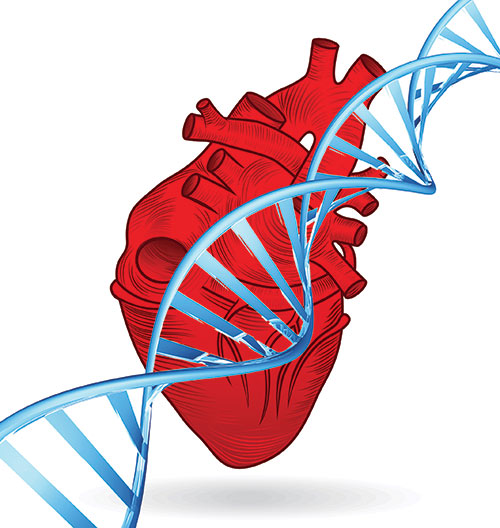
A gene therapy targeting the inherited electrical heart disorder long QT syndrome has been developed by researchers at the Mayo Clinic and has shown early success in lab-based studies.
The therapy involves a two-stage process of silencing the genetic error that causes the electrical dysfunction and then replacing it with a functional protein using a short hairpin RNA vector.
As reported in the journal Circulation, the research is still at an early stage, but shows promise in a lab-based cardiac cell model.
Although the first gene therapy trials happened more than 30 years ago, several deaths and adverse effects from these original therapies, combined with sometimes limited efficacy, led to delays in further research and development in this area.
However, things have changed over the last few years. Since the eye gene therapy Luxturna was approved by the FDA in 2017, more than double the number of new therapies for different genetic diseases have gone into development than before and there have been notable successes in developing therapies for various retinal, neurological and immune disorders.
The possibility of developing gene therapies for heart disease has not been explored in depth until recently and is still in its early stages. More widespread heart diseases with polygenic causes are complicated to target with gene therapies and incur high costs. But many rarer arrythmias, such as long QT syndrome, have a genetic cause and are therefore potential gene therapy targets.
“Gene therapy is an emerging area of interest for treating a variety of genetic heart diseases in general and long QT syndrome in particular,” says Michael Ackerman, M.D. Ph.D., a Mayo Clinic cardiologist and director of Mayo Clinic’s Windland Smith Rice Comprehensive Sudden Cardiac Death Program, who led the research.
Long QT syndrome is caused by an electrical heart problem that can cause irregular heartbeat, and under conditions of stress, or exertion, can cause the heart to stop beating suddenly. It occurs in approximately 1 in 7,000 people and most often has a genetic cause, although in some cases it can be acquired as a side effect of certain medications or as a result of other illnesses.
Ackerman and team designed and developed the first suppression and replacement KCNQ1 gene therapy approach for the potential treatment of patients with type 1 long QT syndrome. The KCNQ1 protein is involved in potassium channel function and mutations in this gene are common in people with long QT syndrome.
The therapy designed by the Mayo Clinic team involved cloning two short hairpin RNAs – one for silencing purposes and one to replace the faulty protein – into a single gene therapy construct.
When tested in beating cardiac cells from long QT patients and controls in the lab, the therapy successfully normalized the electrical function of the long QT cells, providing proof of principle to continue development of the therapy.
“If the therapeutic efficacy of this ‘disease-in-the-dish’ gene therapy trial with KCNQ1 can be replicated in a nonhuman, animal model of long QT syndrome, then suppression-replacement gene therapy may be a promising strategy for long QT syndrome in general and in theory almost any sudden death-predisposing autosomal dominant genetic heart disease,” says Ackerman.
“Of course, we still have a long way to go from nearly curing a patient’s heart cells in the dish to effectively treating the whole person. Nevertheless, we are excited by this first critical milestone and look forward to the next step.”













